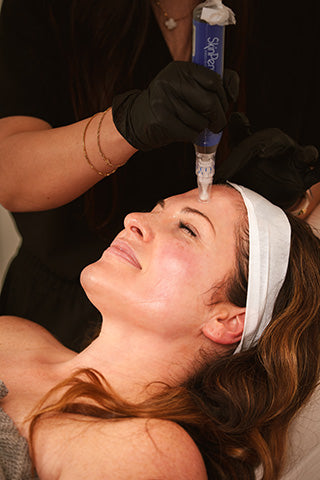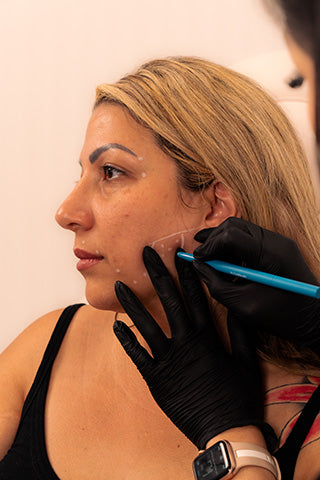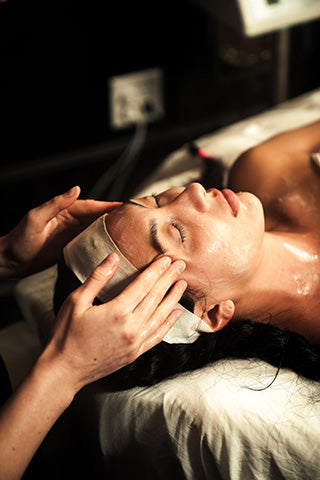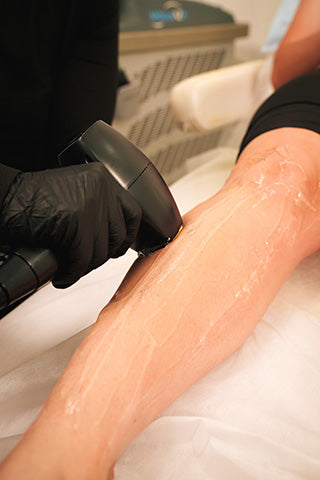Have you struggled with constant shaving, painful waxing, or irritating creams, only to face frequent regrowth and skin discomfort? These traditional methods have their downsides, often resulting in frustration and disappointment. Laser hair removal is increasingly becoming a popular, long-term solution for unwanted hair, offering a promising alternative that targets the root of the problem. In this comprehensive beginner's guide, we'll walk you through everything you need to know about laser hair removal in 2025. You'll understand how the procedure works, how to prepare, its effectiveness for different skin types, potential side effects, and real long-term results to help you feel confident and informed before you book your first appointment.
Understanding Laser Hair Removal in 2025
What Exactly Is Laser Hair Removal?
Laser hair removal is a medical procedure that uses concentrated light beams (lasers) to target and destroy hair follicles. The technology works by directing highly concentrated light into hair follicles, where pigment in the follicles absorbs the light, damaging the follicle and inhibiting future hair growth. By 2025, laser technology has evolved significantly from its earlier iterations, featuring advanced cooling systems, more precise targeting capabilities, and improved safety features. Today's lasers can effectively treat a wider range of skin tones and hair types than ever before, making permanent laser hair removal more accessible and inclusive for individuals seeking effective hair removal solutions.
The global laser hair removal market is projected to reach $7.7 billion by 2035, growing at a CAGR of 18.3% from 2025 to 2035. Meanwhile, the U.S. laser hair removal market is expected to be worth around $2,100 million by 2034, growing at a CAGR of 18.96% from 2025 to 2034. For more detailed information on laser hair removal and how it works, you can consult the Mayo Clinic's overview on Laser Hair Removal.
How Does Laser Hair Removal Work?
Laser hair removal works on a simple but ingenious principle: selective photothermolysis. This process involves emission, absorption, conversion to heat, follicle damage, and protection of surrounding skin. The effectiveness of the treatment depends largely on the hair being in its active growth phase (anagen phase). Since not all hair is in this phase simultaneously, multiple treatments are necessary for comprehensive results.
Laser Hair Removal Process
|
Phase |
What Happens |
Why It Matters |
|
Preparation |
Skin is cleaned and sometimes numbing cream applied |
Creates optimal conditions for treatment |
|
Treatment |
Laser device is applied to targeted areas |
Delivers energy to hair follicles |
|
Cooling |
Cooling technology protects skin |
Minimizes discomfort and prevents damage |
|
Absorption |
Melanin absorbs laser energy |
Converts to heat that damages follicle |
|
Recovery |
Minor redness subsides within hours |
Skin begins healing process |
As a dermatologist with over 20 years of experience in beauty and personal care, I've seen firsthand how laser hair removal can transform not just appearances but confidence levels. It's fascinating to watch how technology evolves and improves patient outcomes.
Technological Advancements in Laser Hair Removal
Cutting-Edge Laser Technologies
The landscape of laser hair removal has transformed dramatically in 2025, with several groundbreaking technologies providing superior results. Modern laser systems feature a minimum of 1000W power output, requiring fewer sessions for optimal results. These advancements include multi-wavelength systems, such as the revolutionary AresSmart® DL500 Diode Laser Hair Removal Machine with its quad-wavelength system (755nm, 808nm, 940nm, and 1064nm); high-power output devices delivering efficient energy; AI-integrated treatment protocols for real-time skin and hair analysis; enhanced cooling technology with multi-layered systems; and larger treatment windows, with expanded spot sizes of 14x25mm, reducing session time by up to 40% compared to 2020 technologies.
Progress on Light-Colored Hair
While laser hair removal continues to work best on dark hair, there have been modest advances in treating lighter hair colors. For natural blonde hair, specialized high-energy lasers with brief pulse widths have shown some success, particularly when the hair root contains more melanin than is visible at the surface. However, true white, gray, and red hair remain challenging for laser treatment as they lack sufficient melanin to absorb the laser energy. Despite technological advances, these hair types still respond poorly to conventional laser treatments in 2025. Industry research continues to explore alternative targeting mechanisms beyond melanin absorption, but no commercially viable breakthrough has yet emerged for these resistant hair colors.
Preparing for Your First Laser Hair Removal Treatment
Initial Consultation with Professionals
A thorough consultation with a qualified provider is essential before beginning laser hair removal. During this appointment, your provider will evaluate your skin type and hair color to determine optimal treatment parameters, perform a patch test to assess your skin's reaction to the laser, review your medical history, including medications and skin conditions, and discuss your expectations, developing a personalized treatment plan.
Key questions you might consider asking during your consultation include:
-
What type of laser will be used, and why is it appropriate for my skin or hair?
-
How many sessions will I likely need?
-
What results can I realistically expect?
-
What are the specific costs, and are there package options?
For additional questions to consider, the American Academy of Dermatology Association's FAQs on Laser Hair Removal can provide further guidance.
Essential Treatment Preparation Steps
Proper preparation significantly impacts treatment effectiveness and comfort. Follow these guidelines:
-
Shave the treatment area 24 hours before your appointment.
-
Avoid sun exposure, tanning beds, and self-tanners for at least 2 weeks before treatment, as tanned skin increases the risk of side effects.
-
Discontinue use of certain products on the treatment area. Avoid retinoids (Retin-A, tretinoin) at least 1 week before, as they increase skin sensitivity. Exfoliants (AHAs, BHAs) should be discontinued 3-5 days prior, as they can irritate skin.
-
Consult with your doctor if you are taking blood-thinning medications or antibiotics, as they may increase bruising and photosensitivity, respectively.
For more detailed preparation steps, you may refer to the Cleveland Clinic's guide on Laser Hair Removal.
Considering At-Home Laser Hair Removal: What You Need to Know
As laser technology advances, many at-home laser hair removal devices have become available in 2025. While these devices offer convenience, there are important considerations:
-
At-home devices generally have lower power levels than professional equipment, which may result in less effective or slower results.
-
Without professional guidance, there's a higher risk of improper use, leading to potential side effects such as burns or skin irritation.
-
At-home devices may not be suitable for all skin tones and hair colors.
If you're considering laser hair removal at home, professional treatments typically offer better results and safety assurances. Always research devices thoroughly and follow manufacturer instructions carefully.
The Procedure: What to Expect During the Session
A Step-by-Step Look at Treatment Day
When you arrive for your laser hair removal session, the process will typically follow these steps:
-
Pre-treatment Preparation: The technician will clean the treatment area and may mark areas to be treated.
-
Protection Setup: Both you and the technician will wear appropriate eye protection designed specifically for the wavelength of the laser being used.
-
Settings Adjustment: The laser settings will be customized based on your skin tone, hair color, and the treatment area.
-
Application of Cooling Methods: Modern devices in 2025 incorporate advanced cooling technologies, such as contact cooling, cryogen spray, or air cooling to protect the skin's surface and minimize discomfort.
-
Treatment Application: The technician will apply the laser to the treatment area, working methodically in sections. You'll feel a sensation similar to a rubber band snap with each pulse.
Session duration varies by treatment area:
-
Small areas (upper lip, underarms): 5-10 minutes
-
Medium areas (bikini, arms): 20-30 minutes
-
Large areas (back, legs): 40-60 minutes
Immediate Care Post-Treatment
After your session, proper aftercare is crucial for comfort and optimal results:
-
Apply cold compresses if you experience discomfort.
-
Use soothing, fragrance-free products recommended by your provider.
-
Apply broad-spectrum SPF 30+ when going outdoors, even on cloudy days.
-
Wear loose clothing over treated areas to prevent irritation.
Activities to avoid immediately after treatment include:
-
Hot showers, saunas, or steam rooms (24-48 hours)
-
Intense exercise causing excessive sweating (24 hours)
-
Swimming, especially in chlorinated pools (48 hours)
-
Applying makeup on treated facial areas (24 hours)
Effectiveness of Laser Hair Removal for Different Skin Tones and Hair Types
Why Skin Tone and Hair Color Matter
Laser hair removal effectiveness depends on the contrast between your hair and skin color. Traditionally, the ideal candidate had dark hair and light skin, creating maximum contrast for the laser to target. The science behind this is straightforward: lasers target melanin (pigment) in the hair follicle. When there's high contrast between dark hair and light skin, the laser can easily distinguish between the two, maximizing effectiveness while minimizing skin damage.
2025 Laser Technology Comparison for Different Skin Types
|
Laser Type |
Best For |
Limitations |
Safety Profile |
|
Alexandrite (755nm) |
Light to olive skin (I-III) |
Less effective on darker skin |
Rapid treatment, minimal discomfort |
|
Nd:YAG (1064nm) |
All skin types, especially IV-VI |
Less effective on fine hair |
Gold standard for darker skin tones |
|
Diode (810nm) |
Light to medium skin (I-IV) |
Moderate efficacy on darker skin |
Good balance of efficacy and comfort |
|
Quad-Wavelength Systems |
All skin types |
Higher cost |
Combines technologies for optimal results |
Achieving Optimal Results for Different Skin Tones
-
For Lighter Skin Tones (Fitzpatrick I-III): Alexandrite and diode lasers typically provide excellent results. Fewer sessions might be required due to better contrast, and treatment intervals may be 4-6 weeks apart.
-
For Deeper Skin Tones (Fitzpatrick IV-VI): Nd:YAG lasers are generally safest and most effective. Advanced cooling systems are essential to protect skin. More gradual approaches with careful power adjustments work best, and sessions might be spaced 6-8 weeks apart for optimal healing.
By 2025, technological advancements have significantly improved effectiveness across all skin types, but proper laser selection remains critical for both safety and results.
Laser Hair Removal for the Face: What You Need to Know
Laser hair removal can be an effective solution for unwanted facial hair. The face is a sensitive area, and special care must be taken during treatment.
-
Treatment customization: Your provider will adjust laser settings to suit the delicate facial skin and hair type.
-
Hair growth patterns: Hormonal factors often influence facial hair growth, meaning multiple sessions and maintenance treatments may be required.
-
Sun exposure: Extra care should be taken to protect the face from sun exposure before and after treatment to minimize risks of pigmentation changes.
-
At-home devices: While at-home laser devices are available, professional treatments are recommended for facial areas to ensure safety and effectiveness.
If you're considering laser hair removal for the face, consulting with an experienced professional is crucial for optimal results.
Practitioner Certifications and Safety Standards in 2025
Understanding Practitioner Qualifications
In 2025, certification requirements for laser hair removal practitioners vary by location, but standardization has improved significantly. When selecting a provider, verify they hold appropriate credentials. For example, in states like Texas, there are four progressive levels of certification:
-
Certified Laser Hair Removal Technician - Apprentice-in-Training
-
Certified Laser Hair Removal Technician
-
Certified Senior Laser Hair Removal Technician
-
Professional Laser Hair Removal Technician
Questions to ask about practitioner qualifications:
-
What specific credentials do you hold for laser hair removal?
-
How many years of experience do you have with my specific skin type?
-
How frequently do you undergo continuing education?
Device Safety Standards and Regulations
The FDA continues to regulate laser devices for hair removal, and 2025 has brought enhanced safety protocols. When researching facilities, ensure they:
-
Use FDA-cleared devices with documented safety profiles
-
Maintain equipment according to manufacturer specifications
-
Perform regular calibration and safety checks
-
Provide comprehensive eye protection specific to the laser wavelength used
Modern facilities should prominently display both practitioner certifications and device safety documentation. Don't hesitate to request this information if it's not readily available.
Common Side Effects and Risks in 2025
Most Frequently Reported Side Effects
Most laser hair removal side effects are mild and temporary:
-
Redness and irritation similar to mild sunburn, subsiding within a few hours to days
-
Swelling around hair follicles, small temporary bumps resolving within 24-48 hours
-
Temporary pigment changes, slight darkening or lightening of treated skin resolving within 1-2 months
Possible (but Rare) Risks of Laser Hair Removal
While advanced 2025 technology has reduced risks significantly, potential complications include:
-
Burns or blisters, usually resulting from improper settings or inadequate cooling
-
Scarring, very rare with proper treatment protocols
-
Paradoxical hair growth, where treatment may stimulate increased hair growth in adjacent areas, more common with certain skin or hair types
-
Eye injury, extremely rare when proper protective eyewear is used
Addressing Cancer Concerns
One common concern is whether laser hair removal can cause cancer. According to current medical research, there is no evidence that laser hair removal increases the risk of skin cancer or any other types of cancer. The lasers used in hair removal are designed to pass through the skin cells and target only the hair follicles. They emit a minimal amount of radiation, which is not associated with cancer development. For more information on the safety and risks associated with laser hair removal, you can review the American Academy of Dermatology Association's FAQs.
Expert Tips to Minimize Risk and Side Effects
-
Choose Qualified Providers: Select facilities with certified, experienced technicians using FDA-approved devices. Searching for "laser hair removal near me" can help you find local options, but always verify their credentials.
-
Complete a Thorough Consultation: Be honest about your medical history and medications.
-
Follow All Preparation Guidelines: Avoid sun exposure and specified products before treatment.
-
Communicate During Treatment: Alert your technician immediately if you experience unusual discomfort.
-
Adhere to Aftercare Instructions: Proper post-treatment care significantly reduces complication risks.
Remember, understanding laser hair removal side effects helps you make informed decisions and reduces the likelihood of complications. As someone who's guided many patients through this process, I can't stress enough the importance of following professional advice closely.
Long-Term Results: What Can You Expect?
How Many Sessions Will It Take in 2025?
Most people require multiple sessions to achieve optimal results. The typical treatment timeline by body area includes:
-
Face: 6-8 sessions, 4-6 weeks apart with 70-90% hair reduction
-
Underarms: 6-8 sessions, 4-6 weeks apart with 80-95% hair reduction
-
Bikini or Brazilian: 6-8 sessions, 6-8 weeks apart with 80-90% hair reduction
-
Legs: 8-10 sessions, 8-10 weeks apart with 70-80% hair reduction
-
Back or Chest: 8-10 sessions, 8-10 weeks apart with 70-85% hair reduction
Most clients experience 70-90% permanent hair reduction after a full course of treatments. With 2025's advanced technology, many clients achieve significant results in fewer sessions than were required in previous years.
How Permanent Is Laser Hair Removal?
Laser hair removal is often touted as a permanent solution to unwanted hair, but it's important to understand that results can vary. Most clients experience 70-90% permanent hair reduction after a full course of treatments; however, fine, light hair may occasionally return in treated areas. Hormonal changes, such as pregnancy or menopause, can trigger new hair growth. Maintenance sessions, typically once or twice yearly, may be needed for optimal long-term results. While laser hair removal offers long-lasting results, understanding that some hair may regrow helps set realistic expectations.
Real-World Testimonials and Outcomes
Current client data from 2025 shows satisfaction rates exceeding 90% for properly performed laser hair removal. Users consistently report:
-
Significant time savings compared to regular shaving or waxing
-
Smoother skin texture with fewer ingrown hairs
-
Reduced irritation and razor burn
-
High confidence in treatment results
-
A positive cost-benefit assessment when considering lifetime hair removal expenses
However, it's important to note that individual experiences can vary. Some individuals may feel, "I regret my laser hair removal," often due to unmet expectations or experiencing side effects. Choosing a qualified provider and understanding the process can help ensure a positive experience.
Cost of Laser Hair Removal in 2025: Is It Worth the Investment?
Current Pricing and Cost Factors
In 2025, laser hair removal costs vary widely based on several factors:
-
Geographic location (metropolitan areas typically charge more)
-
Technology used (quad-wavelength systems cost more than older technologies)
-
Practitioner expertise and clinic reputation
-
Package vs. individual session pricing
-
Treatment area size and hair density
Average Pricing by Treatment Area (2025)
|
Body Area |
Price Range Per Session |
Package Price (6 Sessions) |
|
Upper Lip |
$90-150 |
$450-750 |
|
Underarms |
$150-250 |
$750-1,250 |
|
Bikini Line |
$200-350 |
$1,000-1,750 |
|
Brazilian |
$300-450 |
$1,500-2,250 |
|
Full Legs |
$500-800 |
$2,500-4,000 |
|
Chest/Back |
$400-700 |
$2,000-3,500 |
Prices vary by location, clinic reputation, and technology used
10-Year Cost Comparison:
-
Laser Hair Removal: $2,200-5,000
-
Professional Waxing: $7,200-24,000
-
Razor Shaving: $1,000-3,000
-
Depilatory Creams: $2,000-4,500
By considering these factors, individuals can make informed decisions about whether laser hair removal is the most cost-effective option for their long-term hair removal needs.
Payment Options and Financial Assistance
The financial landscape for laser hair removal has evolved significantly in 2025, offering various options to make treatments more accessible:
-
Health Savings Accounts (HSA): Can be used for eligible expenses
-
Medical insurance coverage: May apply in specific medical cases
-
Zero-interest payment plans, membership models, or annual maintenance packages
Always inquire about available financing options and whether your provider offers price matching for competitor rates.
Assessing the Value: Cost vs. Benefit
When evaluating if laser hair removal is worth the investment, consider:
-
Time savings: The average person spends 72 hours per year on hair removal; laser treatment significantly reduces this commitment.
-
Convenience factor: Fewer concerns about last-minute grooming needs.
-
Long-term economics: Potential savings over time compared to ongoing costs of waxing, shaving, or creams.
-
Quality of life improvements: Increased confidence and comfort.
Most clients report that the investment pays for itself within 2-3 years when considering both financial and quality-of-life factors.
Key Questions Answered: FAQs on Laser Hair Removal in 2025
What I Wish I Knew Before Laser Hair Removal?
Many clients wish they had known:
-
Results require patience and multiple sessions.
-
Treatment is more effective during certain times of the year (fall or winter).
-
Results vary based on hormonal factors and health conditions.
-
The importance of finding a truly qualified provider.
-
Some maintenance may be needed long-term.
For additional insights, you might find it helpful to read through the Mayo Clinic's overview on Laser Hair Removal, which covers preparation and expectations.
What Are the Don'ts of Laser Hair Removal?
Critical things to avoid include:
-
Don't wax, pluck, or use depilatory creams between sessions.
-
Don't tan (natural or artificial) before or after treatments.
-
Don't schedule treatments while on photosensitizing medications.
-
Don't use retinol products on treatment areas.
-
Don't expect instant or 100% permanent results.
How Should I Prepare for Laser Hair Removal?
Optimal preparation includes:
-
Shaving the treatment area 24 hours before your appointment.
-
Avoiding sun exposure for at least 2 weeks prior.
-
Discontinuing certain skincare products like retinoids and exfoliants.
-
Wearing comfortable, loose clothing to your appointment.
-
Arriving with clean skin (no lotions, deodorants, or makeup).
Are There Negatives to Laser Hair Removal?
Potential downsides include:
-
The upfront cost can be significant.
-
Multiple sessions are required for optimal results.
-
Some discomfort during the procedure.
-
A small risk of side effects, particularly with inexperienced providers.
-
The treatment may not be effective for blonde, red, or gray hair.
Understanding these factors helps you weigh the pros and cons effectively.
Your Next Steps: Moving Forward with Confidence
Now that you understand the essentials of laser hair removal in 2025, here's how to proceed:
-
Research Providers Thoroughly: Look for certification, experience, and reviews specific to your skin type and treatment area. Searching online for "laser hair removal near me" can help identify local clinics, but ensure to verify their qualifications.
-
Schedule Consultations: Book appointments with 2-3 different providers to compare approaches and comfort levels.
-
Ask Detailed Questions: Use the information in this guide to evaluate their expertise.
-
Start with a Smaller Area: If you're nervous, begin with a smaller treatment zone to gauge your experience.
-
Plan Your Timing: Ideal start times are fall and winter when sun exposure is naturally limited.
Remember that successful laser hair removal is a partnership between you and your provider. By understanding the process, preparing properly, and following all pre- and post-treatment guidelines, you're setting yourself up for the smooth, hair-free results you desire.
Laser hair removal can be a life-changing decision, reducing the time, discomfort, and inconvenience associated with traditional hair removal methods. Being informed about potential side effects, including temporary skin irritation or, in extremely rare cases, more severe reactions, empowers you to make the best choice for your needs. Always consult with seasoned professionals to minimize risks and address any concerns.
While concerns about laser hair removal causing cancer are unfounded according to current medical research, staying informed about all aspects of the procedure is essential. If you have any apprehensions, discussing them with a medical professional can provide peace of mind.
Embark on your journey toward lasting hair reduction with confidence, armed with the knowledge of what to expect and how to achieve the best possible results.














